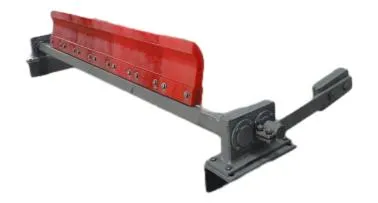 Afrikaans
Afrikaans  Albanian
Albanian  Amharic
Amharic  Arabic
Arabic  Armenian
Armenian  Azerbaijani
Azerbaijani  Basque
Basque  Belarusian
Belarusian  Bengali
Bengali  Bosnian
Bosnian  Bulgarian
Bulgarian  Catalan
Catalan  Cebuano
Cebuano  Corsican
Corsican  Croatian
Croatian  Czech
Czech  Danish
Danish  Dutch
Dutch  English
English  Esperanto
Esperanto  Estonian
Estonian  Finnish
Finnish  French
French  Frisian
Frisian  Galician
Galician  Georgian
Georgian  German
German  Greek
Greek  Gujarati
Gujarati  Haitian Creole
Haitian Creole  hausa
hausa  hawaiian
hawaiian  Hebrew
Hebrew  Hindi
Hindi  Miao
Miao  Hungarian
Hungarian  Icelandic
Icelandic  igbo
igbo  Indonesian
Indonesian  irish
irish  Italian
Italian  Japanese
Japanese  Javanese
Javanese  Kannada
Kannada  kazakh
kazakh  Khmer
Khmer  Rwandese
Rwandese  Korean
Korean  Kurdish
Kurdish  Kyrgyz
Kyrgyz  Lao
Lao  Latin
Latin  Latvian
Latvian  Lithuanian
Lithuanian  Luxembourgish
Luxembourgish  Macedonian
Macedonian  Malgashi
Malgashi  Malay
Malay  Malayalam
Malayalam  Maltese
Maltese  Maori
Maori  Marathi
Marathi  Mongolian
Mongolian  Myanmar
Myanmar  Nepali
Nepali  Norwegian
Norwegian  Norwegian
Norwegian  Occitan
Occitan  Pashto
Pashto  Persian
Persian  Polish
Polish  Portuguese
Portuguese  Punjabi
Punjabi  Romanian
Romanian  Russian
Russian  Samoan
Samoan  Scottish Gaelic
Scottish Gaelic  Serbian
Serbian  Sesotho
Sesotho  Shona
Shona  Sindhi
Sindhi  Sinhala
Sinhala  Slovak
Slovak  Slovenian
Slovenian  Somali
Somali  Spanish
Spanish  Sundanese
Sundanese  Swahili
Swahili  Swedish
Swedish  Tagalog
Tagalog  Tajik
Tajik  Tamil
Tamil  Tatar
Tatar  Telugu
Telugu  Thai
Thai  Turkish
Turkish  Turkmen
Turkmen  Ukrainian
Ukrainian  Urdu
Urdu  Uighur
Uighur  Uzbek
Uzbek  Vietnamese
Vietnamese  Welsh
Welsh  Bantu
Bantu  Yiddish
Yiddish  Yoruba
Yoruba  Zulu
Zulu Understanding Conveyor Belt Drive Rollers and Their Importance in Material Handling Systems
Understanding Conveyor Belt Drive Rollers An Essential Component of Material Handling Systems
In modern industry, efficiency and speed are paramount, and one of the key components contributing to these objectives is the conveyor belt system. Among the many elements that make up this intricate system, conveyor belt drive rollers play a crucial role in ensuring smooth operation and optimal performance.
Conveyor belt systems have revolutionized how materials are transported in various settings, from factories and warehouses to airports and distribution centers. Drive rollers are integral to this innovation, responsible for powering the conveyor belts that move goods from one location to another. These rollers are typically installed at the ends of the conveyor belt system and are driven by a motor, creating the necessary motion to transport products.
Construction and Design of Drive Rollers
The design of conveyor belt drive rollers is typically robust, as they must withstand the constant wear and tear associated with high-volume material handling. Drive rollers can be made from various materials, including steel, aluminum, and plastic, depending on the specific application and the load that needs to be transported. Steel rollers are preferred for heavy-duty applications due to their strength and durability, whereas plastic rollers might be utilized for lighter loads and applications where noise reduction is beneficial.
A well-designed drive roller will feature a surface that provides sufficient traction to grip the conveyor belt effectively. This is vital in maintaining the correct tension on the belt and ensuring that it moves smoothly without slipping. Additionally, drive rollers may incorporate features such as bearings and seals to minimize friction and extend their operational lifespan.
Types of Drive Rollers
There are several types of drive rollers utilized in conveyor systems, each serving a unique purpose. The most common type is the crowned roller, which is slightly domed to help center the belt, preventing it from drifting off to one side. Another type is the flat roller, which is suitable for straight conveyors where alignment isn't critical. For applications requiring frequent product transfers and multidirectional movement, specialty drive rollers such as tapered or angled rollers may be employed.
conveyor belt drive rollers

Maintenance of Drive Rollers
To ensure optimal performance and prevent costly downtimes, regular maintenance of conveyor belt drive rollers is essential. Routine checks should include inspecting for wear and tear, misalignment, and any signs of damaged seals or bearings. Proper lubrication of moving parts can prevent premature wear, while keeping the rollers and surrounding area clean will reduce the risk of debris interfering with their movement.
Advantages of Using Conveyor Belt Drive Rollers
The advantages of incorporating drive rollers into conveyor systems are manifold. First and foremost, they enhance efficiency by facilitating quick and reliable material movement. This is particularly important in environments that rely on just-in-time delivery and order fulfillment. Additionally, using drive rollers can reduce labor costs, as fewer personnel are needed to manually move products.
Moreover, the flexibility of conveyor systems equipped with drive rollers allows businesses to adapt their operations to various requirements. Whether dealing with bulk items, packaged goods, or even delicate products, conveyor belts can be customized to meet the demands of diverse industries, including manufacturing, logistics, and food processing.
Conclusion
In conclusion, conveyor belt drive rollers are vital components that contribute significantly to the efficiency, reliability, and versatility of material handling systems. As industries continue to evolve and the demand for efficient operations grows, understanding and investing in high-quality drive rollers will remain essential. Their ability to facilitate the smooth transport of goods not only enhances operational workflows but also provides a competitive edge in a fast-paced market. Investing in quality drive rollers and ensuring regular maintenance will yield considerable returns in efficiency and productivity for any business reliant on material handling systems.
-
Revolutionizing Conveyor Reliability with Advanced Rubber Lagging PulleysNewsJul.22,2025
-
Powering Precision and Durability with Expert Manufacturers of Conveyor ComponentsNewsJul.22,2025
-
Optimizing Conveyor Systems with Advanced Conveyor AccessoriesNewsJul.22,2025
-
Maximize Conveyor Efficiency with Quality Conveyor Idler PulleysNewsJul.22,2025
-
Future-Proof Your Conveyor System with High-Performance Polyurethane RollerNewsJul.22,2025
-
Driving Efficiency Forward with Quality Idlers and RollersNewsJul.22,2025





























